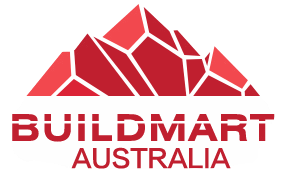Artificial grass, also known as synthetic turf or AstroTurf, is typically made of a combination of materials, including plastic, rubber, and various fibres. The fibres are typically made of nylon, polyethylene, or a combination of the two. The plastic and rubber materials are used as a base and to provide support for the fibres, which are designed to mimic the appearance and feel of natural grass. Some artificial grass is also made with a combination of natural materials such as cork and rubber.
Does the length of artificial grass matter?
The length of the fibres in artificial grass can affect the overall appearance and performance of the turf. Longer fibres can give the turf a more natural look and feel, but they may also be more susceptible to damage and require more maintenance. Shorter fibres, on the other hand, can be more durable and require less maintenance, but they may not have the same natural look and feel as longer fibres.
The length of the fibres also affects the “memory” of the artificial turf, meaning how well it will spring back after being walked or played on. Longer fibres have better memory and will maintain their shape better after heavy use.
In addition, the length of the fibres can also affect the safety of the turf. Longer fibres can provide more cushioning and reduce the risk of injury, while shorter fibres may be harder and less forgiving if someone falls.
How is artificial grass made for sport different?
Artificial grass for sports is typically designed to be more durable and resilient than artificial grass used for landscaping or other non-sport applications.
One way artificial grass for sports is made differently is by using stronger, more durable fibres. These fibres are often made of a combination of nylon and polyethylene, which are able to withstand heavy use and resist wear and tear.
Another way artificial grass for sports is made differently is by using a thicker, more supportive base. The base layer is typically made of crushed stone, rubber or a combination of the two. These materials provide a stable surface for the fibres to stand on and help to reduce the risk of injury.
Additionally, the infill material used in artificial grass for sports is different from the one used in landscaping. Infill materials such as rubber crumbs or sand are added to the grass to help provide stability, cushioning and support. This infill helps the artificial grass to mimic the feel of natural grass and to provide a consistent playing surface.
Some artificial grass for sports is also designed to mimic the feel and behaviour of natural grass, and some of them are designed to be more realistic in terms of ball roll and bounce.
How is artificial grass made for golf different?
Artificial grass used for golf is specifically designed to mimic the look and feel of natural grass, and to provide a consistent playing surface for golfers.
One way in which artificial grass for golf is made differently is by using fibers that mimic the look and feel of natural grass. These fibers are often made of a combination of nylon and polyethylene, which are designed to look and feel like natural grass. They are also designed to be UV-resistant to prevent fading and discoloration.
Another way in which artificial grass for golf is made differently is by using a more realistic infill. Infill material such as sand, rubber or a combination of the two is added to the grass to help provide stability, cushioning and support. This infill helps the artificial grass to mimic the feel of natural grass, and provide a consistent playing surface.
Additionally, artificial grass for golf is made to mimic the ball roll and bounce of natural grass. The fibers, infill and base layers are engineered to provide a similar playing experience as a natural grass course, allowing the ball to roll and bounce as it would on a real fairway.
In summary, artificial grass for golf is made to mimic the look and feel of natural grass, provide a consistent playing surface, and replicate the ball roll and bounce of natural grass. It is constructed with fibers that mimic natural grass, realistic infill materials and engineered base layers to provide a similar playing experience as a natural grass golf course.
